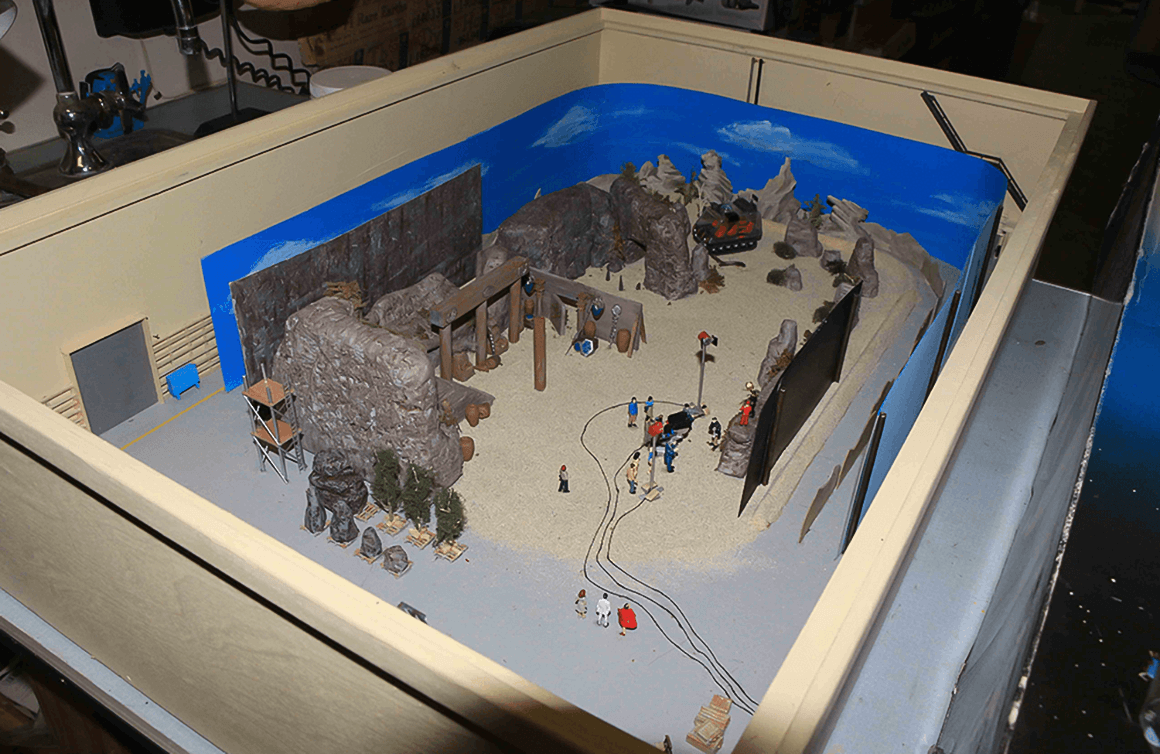How do you describe your collection?
My collection of Lost in Space toys and memorabilia started in 1965 after I watched the premiere and it became my favourite series. There weren’t a lot of toys associated with the series back then and all I had was their Topps collector cards, a View-Master, and an Aurora robot kit. Some of the other toy items, like the Remco robot, board games, Switch and Go chariot, and lunch box weren’t available in my small town so I was only able to acquire them later as an adult.
Through the 1970s and 1980s, I could only find garage kits. It wasn’t until the 1990s that they finally released the first commercial model kit of the Jupiter 2 spaceship and other commercial items and they are continuing to be released even today. I now have about anything that was ever released except for some very rare pieces. In the last couple of years, I decided to take many of the figures and models out of the display boxes and build them into dioramas to create a more interesting displays. I have duplicate models so I didn’t mind cutting some of them up and modifying them to build the dioramas. If something doesn’t exist, I build it from scratch and sometimes use 3D printed figures. I think it brings the figures to life to feature them in scenes from different episodes.
When and why did you start your collection?
My collection started as soon as the series premiered. Besides the toys, I’d save articles, photos, and anything else related to Lost in Space. I was always interested in astronomy, space travel, and science so Lost in Space checked off all of those boxes. Since there wasn’t a lot to collect at that time, I’d have to use my imagination to turn ordinary items and places into the fantastic props and sets that were on the show. Those feelings never left me and when I was lucky enough to acquire some original props from the show, I used them to build other replica props to create my biggest toy from the show, a full-scale, but partial, interior replica of the Jupiter 2 spaceship. A few years later, I expanded that to include part of the exterior of the spaceship and surrounding planet. As they say, as you get older, your toys become bigger.
How do you display and store your collection?
Initially, I only needed the surface of a desk to display everything. As I built more models and collected more of the many versions of the robots, I kept them in a display case in my home office. After I acquired a few original props and started building my replica spaceship interior from the show, that took over an entire room in my basement. In the last few years, I had to expand beyond that and now display most of my collection in a downtown building that I use as a studio. I have one room there with display cases dedicated to the models and dioramas and the larger dioramas go on shelves. Each diorama depicts a specific scene from an episode, and in many cases, I’ll display a prop from that same episode next to the diorama. A video of that collection can be found on YouTube. Another video shows more of my home collection in my office before I started building the dioramas.
What do you consider to be the Holy Grail of your collection?
The Holy Grail of my collection is probably my four-foot diameter Jupiter 2 spaceship. This was a small-run kit but the basic fibreglass shell was cast from a mould taken from the original filming miniature. I especially like it because it shows the large scale of the models that were built for filming. I added working parts to it that could be controlled by radio and it can be seen working in a video on my YouTube channel. It was way too big to display at my house and is now at my studio.
What advice would you give to someone interested in starting a Lost in Space collection?
It is still a good time to start a Lost in Space collection because there are so many products available today, many more than were ever made during the original series. The series never died out and still remains popular. Many online groups and websites are available to learn about the newer toys from the series, and eBay makes it easier to find many of the older items. 3D printing makes it possible to create items that were never commercially viable to make before. Having them displayed in a favourite room where they can be seen and enjoyed always brings me joy and takes me back to that time when I first experienced the series.
See more of William’s collection on his YouTube channel.
Drop us a line to let us know about your collection of vintage toys and/or games. We just may feature your collection!














